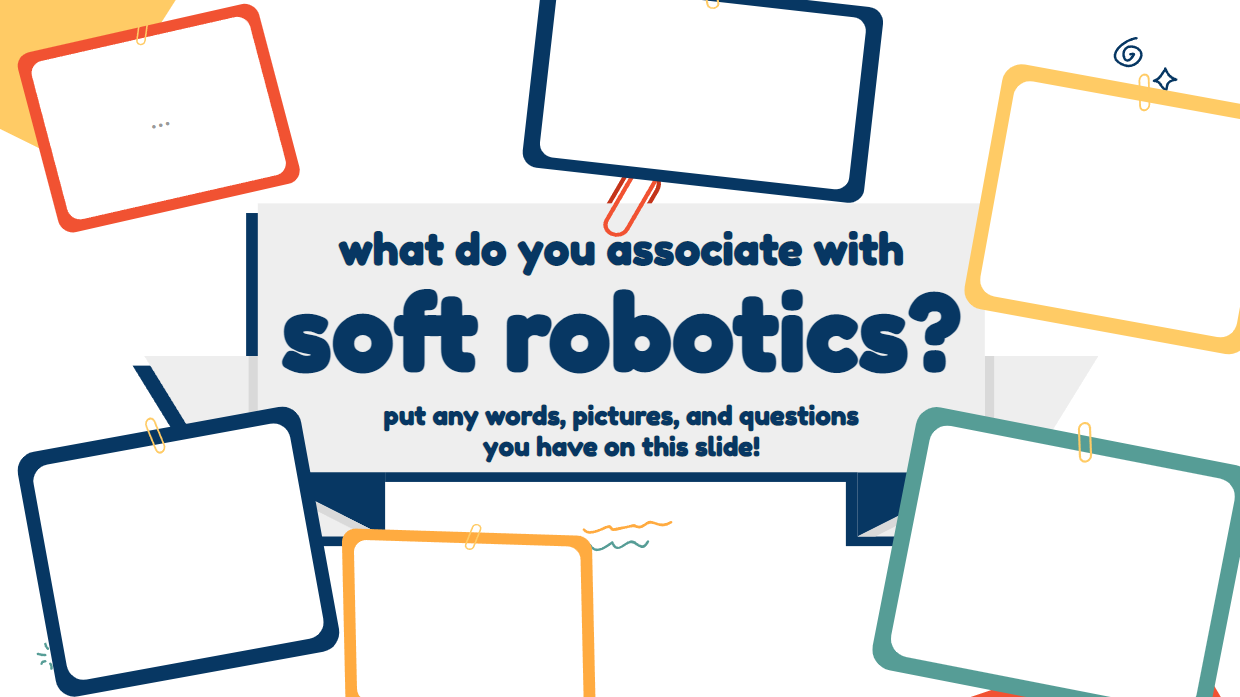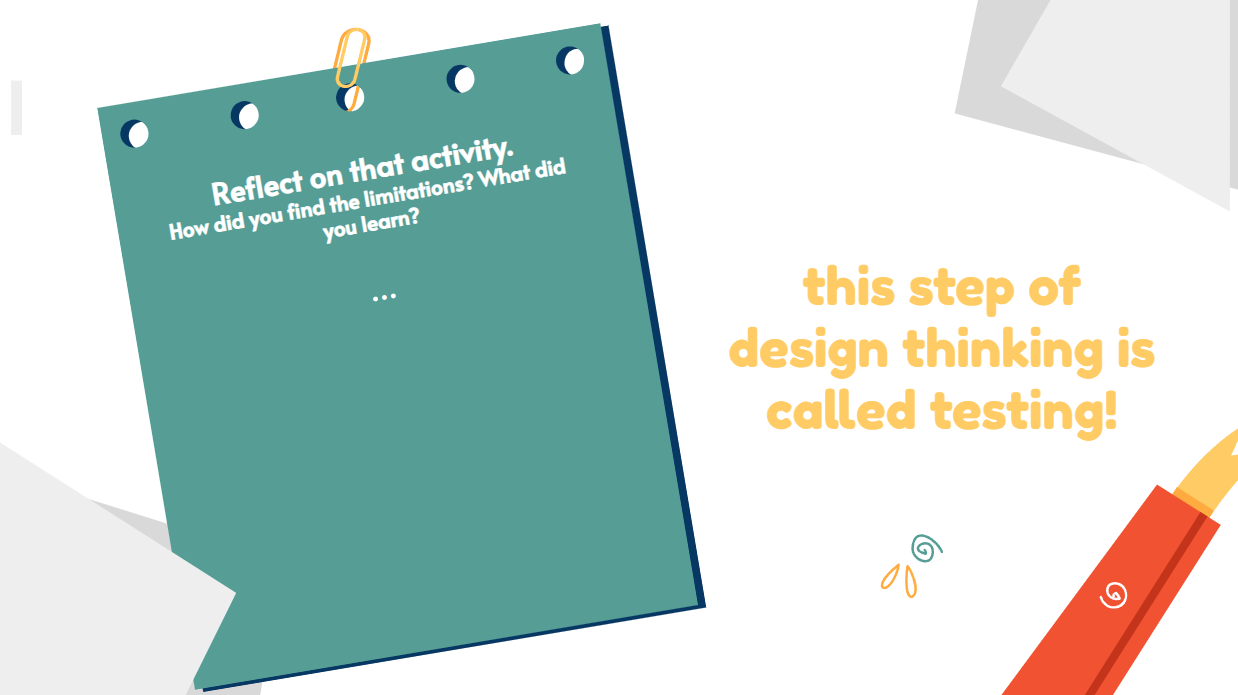Soft Robotics Toolkit Assessment
an assessment proposal for a soft robotics curriculum
Harvard Graduate School of Education
Written with Denise Fabella and Chan Pham
Project Synopsis
"The Soft Robotics Toolkit aims to develop design engineering tools and kits for students, researchers, and hobbyist-makers to spark interest in soft robotics and catalyze new innovation in this exciting field. Soft robotics, as an emerging technology, has seen a steady increase in research activity over the last 10 years (in big part to being a focus area of the National Robotics Initiative), reaching a stage of maturity where the translation of knowledge to the researchlic is timely." As learning designers, our task was to come up with a curriculum assessment strategy for the entry-level soft gripper kit.
Preliminary Research
Students today will enter ever-shifting job markets: the World Economic Forum’s Future of Jobs Report states that, in the next 10 years, “a non-negligible share of newly created jobs will be in wholly new occupations, or existing occupations undergoing significant transformations in terms of their content and skills requirements.” The report also highlighted “robotics specialists” as a role growing in demand (World Economic Forum, 2020). Recognizing that inherent identification with STEAM fields may not be available to all students, our assessment suggestions incorporate opportunities for all students to identify themselves as tinkerers, designers, and creators for their communities.
We also prioritized design thinking as a means of developing social-emotional learning: not only will students gain a firsthand understanding of the engineering design process, but they will also develop collaboration skills, self-directedness, and communication abilities. We are emphasizing process-based over product-based assessment, as outcomes may be undetermined, open to further iteration, or misrepresentative of holistic learning (Graham, 2019). We see this in museum spaces as well. The Children’s Museum of Pittsburgh (Wardrip & Brahms, 2015) emphasizes learning practices over learning outcomes as seen in Figure 1, allowing for results to be undetermined and spontaneous and understanding that process is just as important as the result. Similarly, the Tinkering Studio at the Exploratorium (2017) provides educators with a framework centered on outcomes gained from learning experiences over tangible results (Figure 2). Finally, feedback as part of the cyclical nature of designing empowers students to have an “ongoing critical dialogue” (Pollock et al., 2015) with peers and programs; the studying of computer science itself also enables student-self directedness because of the instant feedback programs and products can provide (Brennan, 2021).
Proposal Introduction
Our proposed learning goals encompass three domains: technical knowledge, design thinking, and socio-emotional learning. In developing our learning goals, we focused on how to develop effective assessments for teachers while still enabling creativity, imagination, and self-expression for learners. For our formative assessment, we propose a design journal students work on throughout the project; our summative assessment is an open-ended application project accompanied by a final gallery walk.
Formative Assessment: Design Journals
To meet the broad span of our learning goals and learner experiences, we designed an assessment that would evaluate not just the learner's final product, but their collective learning process. For our formative assessment, we decided on a design journal that students complete throughout the curriculum (Figure 3). Depending on the day, the journal prompts may be reflective or interactive and individual or collaborative. The built-in variety allows for the assessment of the variety of learning goals while serving different types of learners and needs throughout the curriculum. For example, earlier in the curriculum when students are building their technical knowledge, students might be asked to explain what an actuator is to a friend or family member. After building the autonomous gripper, however, students may benefit more from individual reflection and do a rose (what worked?), thorn (what was a challenge?), and bud (what new ideas sprung up?) activity. The different activities are designed around principles to assess student self-directed learning, which states that assessment should recognize the individuality of the learner, illuminate the learning process, engage multiple perspectives, and cultivate the capacity for personal judgment (Brennan et al., 2021). Additional design journal prompts (Figure 4) and sample slides can be found in the appendix (Figures 5-9).


Beyond assessment, the design journals also serve students by furthering their learning. Reflection is a key component of learning as it turns experiences into understanding. (Ellis et al., 2014) This is especially critical for hands-on and open-ended learning like soft robotics, where the ability to build does not always mean the ability to explain or transfer knowledge. Furthermore, reflection fosters meta-cognition skills that enable learners to become more flexible, growth-oriented learners (Boser, 2018). The growth mindset is fostered through the design journal with repeated prompts throughout the curriculum and activities that ask learners to look back and reflect on their newly gained understanding.
Summative Assessment: Application Project & Gallery Walk
Our framework also suggests the integration of a project-based summative assessment. While summative assessments generally aim to evaluate student learning through high stakes (Carnegie Mellon University, n.d.), we imagine a final project that focuses on the quality of the application and the depth of the process, rather than the evaluation of knowledge gains. Namely, we designed the project to challenge the learners’ contextual and technical understanding of soft robotics, help individual learners realize their potential roles in a collaborative STEAM environment, develop design thinking skills, and reconnect to their social and emotional growth.
In efforts to design an equitable form of assessment, the project begins with an open-ended, individual prompt of brainstorming a novel soft robotics project. Nemiro, Larriva, and Jawaharlal (2015) suggest that “open-ended, challenging tasks that ask students to solve real-world problems” are ideal for encouraging a creative climate in a robotics classroom (p. 87). The loose nature of the prompt enables learners to approach the project from each individual’s unique perspective and skillset and potentially build intrinsic motivation within learners through self-developed project ideas (Castek et al., 2019). Once the learners have presented these ideas to their peers, they will be given the opportunity to form small groups (3-5 people) to design and fabricate a functional soft robotics project. For example, one group of learners may think of the project from a more conceptual lens and ideate an application of the soft robotics actuators in a new context, another group may tackle a functioning, incremental development of the soft gripper, and another group may create an expressive art project that incorporates pneumatic, silicone actuators. Based on the consensus of the learners, the facilitators might also provide sources to find existing applications of soft robotics for additional scaffolding.
Learners will also be prompted to document their design process in their design journals, including anything that is not included in their final prototype. The documentation of the design process will assist learners in reflecting on their journey to becoming soft robotics technologists. Specifically, it will help students understand the iterative design cycle that is foundational to technological development (Nemiro et al., 2015). This documentation will go hand in hand with the design journal prompts to help connect the design project to our reflective probing questions.
Finally, once the projects have been developed into a prototype, the students will present their work in a “gallery walk.” According to The Teacher Toolkit, a gallery walk is a “discussion technique [that] allows students to be actively engaged as they [...] share ideas and respond to meaningful questions, documents, images, problem-solving situations, or texts” (Education Service Center Region 13, n.d.). The gallery walk is designed to help presenters develop their oral and visual communication abilities and prompt listeners to extend their peer’s work through critique, feedback, and further ideation. We hope that the exposure of many different projects and ideas will foster an environment for divergent thinkers to explore the “adjacent possible” (Johnson, 2010, as cited by Graham, 2019).